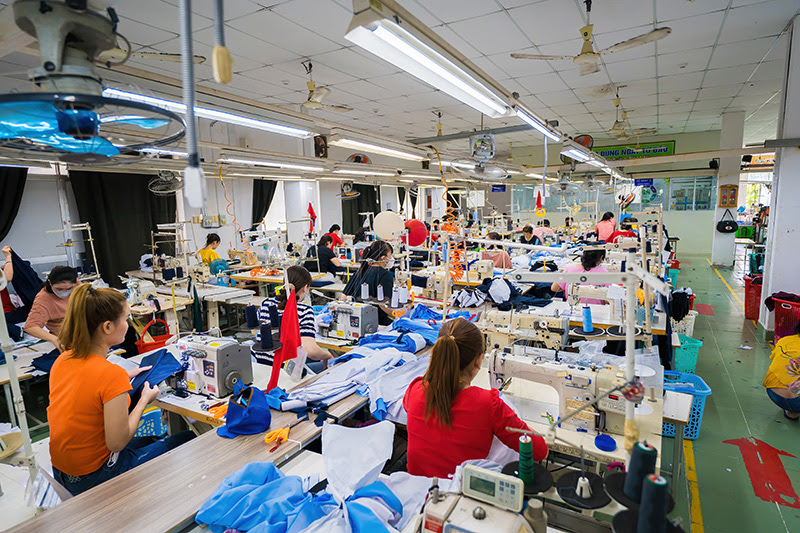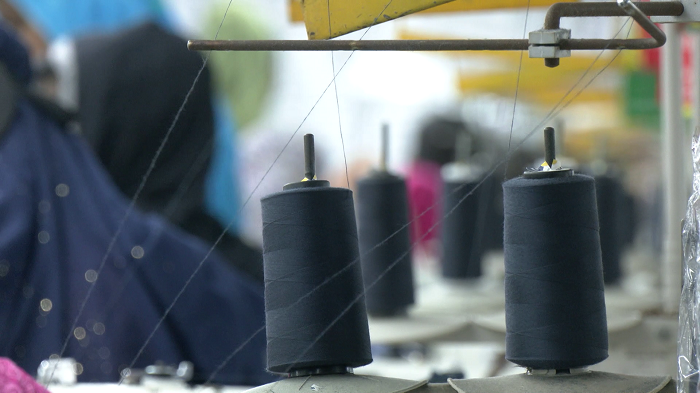On July 15 about 100 cotton and textile professionals gatheredin New York for a one-day conference titled, ‘A Dialog on China's Cotton and Textile Industry Evolution.' Liu Hua, General Counsel for the China National Cotton Reserve Corp. (CNCRC)provided some general guidelines and insight about CNCRC’s business development plans. China currently has a 163per cent stocks-to-use ratio of cotton and is estimated to have 63 per cent of the current world reserves. Huaadds, “The current state of affairs is abnormal. We are trying to reduce inventory but need more time. Consumption needs to be increased, as more and more farmers become city dwellers.
He went on to add the China does not want cotton production to decrease too quickly. And it will take at least three more years before China’s consumption use to ratios will improve.Hua said CNCRC will create a dedicated logistics company "in near future," which will oversee cotton storage and transportation. China currently relies heavily on railroads to get fibre from the production areas in the northwest to the mills in the east, but the intention is to increase the use of highways for better flexibility.
At the end of his presentation, Hua said CNCRC pledges to be more transparent and open in its operations.
The combined apparel market of China and India will grow to $740billion by 2025 -- surpassing the projected combined US and European market of $725billion at the time. This was revealed in a recent report by India-based management consultants Wazir Advisors, 'The Road to 2025'. The report estimates that in 2025 the global apparel market will cross the $2 trillion mark from the current value of $1.1 trillion.
The report released at Texcon 2013, organized by Confederation of Indian Industries (CII), also points out that intra-Asia trade of textile and apparel will grow from $180billion in 2011 to $350billion by 2025. And it said India's export share in this market would grow 3.5 times from its current value of $12billion.
The report added that while China will remain the world's biggest clothing exporter, growth in domestic demand is expected to outpace exports.Also Chinese output growth will slow from today's 7 per cent to 5-6 per cent per annum by 2025. This will lead to an annual global shortfall in production compared to demand estimated to exceed $100billion.
And with China's increased focus on domestic consumption and rising costs, other exporting countries such as India, Bangladesh, Pakistan and Vietnam will have an opportunity to gain global export market share, the report said.
Li & Fung, the most important company that most US shoppers have never heard of has long been on the cutting edge of globalization, chasing cheap labor to garment factories first in China, then elsewhere in Asia, including Bangladesh.
Now, with sweatshop disasters drawing international scrutiny, business is looking up for the next best place such as South America or sub-Saharan Africa where it can steer apparel buyers seeking workers to stitch clothes for a few dollars a day.
As the world's largest sourcing and logistics company, Li & Fung plays matchmaker between factories in poor countries and vendors in affluent countries, finding the lowest-cost workers, haggling over prices and handling over the logistics for roughly a third of retailers found in typical US shopping malls.
Hong Kong-based Li & Fung is a merchandiser who does not own any clothing factories, sewing machines and fabric mills. Its chief asset is the 15,000 suppliers in more than 60 countries that make up a network so sprawling that an order for 500,000 bubble skirts that once took six months from drawing board to store shelf, now takes six weeks at a sliver of the price. That scale gives Li & Fung tremendous clout.
But in pioneering and perfecting the global hunt for ways to produce clothing more quickly and cheaply, Li & Fung, which had $20 billion in revenue last year, has been described by critics as the garment industry's ‘sweatshop locator’.In Bangladesh, Li & Fung has been tied to several calamities. It arranged the production of clothing for Kohl's at one factory where 29 workers died in a fire in 2010. It brokered some work at another in 2011 where more than 50 workers who made Tommy Hilfiger clothing were injured and at least two died in an explosion and a stampede.And last year, Li & Fung was responsible for some garments produced at the Tazreen Fashions factory, where 112 workers died last November after many of them were ordered to continue working even though fire alarms had sounded.
Garment exports from India has seen a 12.13 per cent increase in June. As per AEPC’s data release for the month of June, “Apparel exports were to the tune of $1,240 million in June 2013-14 with an increase of 12.13 per cent against the corresponding month of last financial year. In rupee terms, exports have increased by 17 per cent in June 2013-14 over the same month of previous FY.
In the FY 2012-13, exports in dollar terms declined by 6 per cent from the previous FY and totaled to $12,923 million in April-March 2012-13.Export in dollar terms for three months of the fiscal 2013-14 has increased by 11 per cent over the same period of previous FY and reached to $3,561 million however, in rupee terms exports increased by 15 per cent compared to the same period of last FY. In April-June 2013-14 in rupee terms apparel export of India was to the tune of Rs19, 918 crores compared to Rs. 17,342 crores in April-June 2012-13.
On imports from India by the US, A Sakthivel, Chairman, AEPC says, “Apparel imports of the United States witnessed an increase of 3.7 per cent in the Jan-May of 2013 from the previous year and amounted to $30.6 billion.”India’s export to EU for Jan-May 2013 amounted to $2.5 billion with a decline of -1.1 per cent compared to the same period of previous year, AEPC chairman observed.
Apparel Export Promotion Council, under the aegis of Ministry of Textiles, Government of India in active collaboration with Embassy of India, Japan, participated with 136 companies, constituting over 20 per cent share in overall participation in JFW International Fashion Fair, Tokyo from 17th – 19th July, 2013.
ZohraChatterji, Secretary (Textiles) inaugurated the ‘India Pavilion’ on July 17, 2013 at Tokyo, Japan. The Indian Pavilion witnessed over 1900 buyers and the business negotiated / done was US$ 32.4 million.
Chatterji had detailed interaction for increasing India’s textile and apparel exports with Shimomoura with various Japanese officials. She also chaired a seminar on ‘Growing India – Japan Cooperation in Textiles and Clothing Sector’ in the presence of leading textile and clothing stakeholders of Japan.Garment exports during the period 2012 were $ 293 million as compared to $270 million in 2011, posting a positive growth of 8.11 per cent. First time visitors were hopeful of generating business in the long term. Considering this, it is expected that the overall growth in business with Japan may be over 10 per cent.
Chatterji also launched Fair Promotion Plan for Japanese buyers for the forthcoming international textile and apparel fair ‘Tex-Trends India’ to be held from January (20-22, 2014) at PragatiMaidan, New Delhi.
Textiles exports to Japan from the world isworth $41540 million. Apparel exports were worth $3,2073million in 2012. India’s exports of textile were worth $485 millon.
Washington-based International Cotton Advisory Committee (ICAC) predicts Pakistan, Brazil, Uzbekistan and many other countries are expected to produce about as much cotton in 2013-14 as they did in 2012-13. Production forecast in China in 2013-14 remained unchanged vis-à-vis last season, while production in India may rise a few hundred thousand tons because of a good monsoon. Production in the United States is falling because of dry weather in some states.
According to the ICAC, 2013-14 world cotton production forecast is 25.6 million tons, while consumption forecast is 24 million tons. World trade forecast of the crop is 9 million tons, and world ending stocks are forecast at a record 19.8 million tons. World production will have exceeded consumption by a cumulative 11 million tons between 2010-11, and at the end of 2013-14, resulting in doubling of world ending stocks in four seasons.
The International Cotton Advisory Committee established in September 1939 assists governments in fostering a healthy world cotton economy. Its role is to raise awareness, provide information and serve as a catalyst for cooperative action on issues of international significance. It provides statistics on world cotton production, consumption, trade and stocks and identifies emerging changes in the structure of the world cotton market. It serves as a clearing house for technical information about cotton and cotton textiles.
Lycra brand owner Invistahas announced the 13 semi-finalists for the ‘Lycra Future Designers Award’a part of the WGSN Global Fashion Awards ceremony. The announcement was made at St Martins Lane, London (UK), at a reception co-hosted by singer and style innovator Kate Nash. This year, the winner will be announced at a star-studded, gala event at the Victoria & Albert Museum in London on October 30.
India’s Himani Harish has been shortlisted. others in the list include:Alison Vincent, Eva Lai, Irina Lazova and Lucy Gardner from UK; Hanna Lucatelli from Brazil; Han Zhongshu, Chow Bohan and Shixuan Zhao, from China; Alejandra Perdomo and Daniela Larrea from Colombia; Silvia Silvia from Singapore; and Patty Clariza, from the United States.
The 5th edition of Lycra Future Designers will offer one outstanding student or graduate designer the chance to work with expert mentors at Invistaand overall consultancy. The winner will also receive fabrics with Lycrafibre, a package to help with the development of a collection to help kick-start their careers.
“The WGSN Global Fashion Awards offers the perfect international platform for Invista, owner of the Lycra brand, to celebrate young and upcoming design from across the globe with shortlisted candidates entering from countries such as UK, Colombia, Brazil, India, China, Singapore and the United States,” says Denise Sakuma, Invista Apparel Global Director of Brand and Communications. “We are so excited to be able to use this platform to launch new creative talents that will help lead and design the apparel industry.”
Japan’s import of cotton yarn has declined by 2.8 percent year-on-year to 140,784 bales during the first half of 2013. This was revealed from data by Japan Spinners’ Association. However, the data reveals Japan’s imports of combed yarn grew by a sharp 18.4 percent to 69,562 bales from January to June.
Its cotton yarn imports from India shot up by 19.8 percent year-on-year to 22,141 bales during the period under review, which included 18,973 bales of combed yarn, showing a rise of 17.6 percent year-on-year.
Japan’s cotton yarn imports from Indonesia also surged to55,093 bales during the six-month period, registering a growth of 19.2 percent year-on-year. However, Japan’s cotton yarn imports from Pakistan dropped by a significant 41.3 percent to 30,478 bales during the same period, according to the data.
Spanish company Jeanologia, a world leader in the development of sustainable technologies for finishing garments, and its partner in China, Prosperity Textile, have launched a sustainable technology Demo Centre in Guangzhou (China). The aim is to transform the Chinese textile industry into a sustainable and environmentally friendly one.It is being conceived as a referral centre in Asia for demonstration and training, specialized in sustainable technologies, such as laser and ozone that allows automation of the production process by reducing production costs while saving water, energy and chemicals and avoiding unhealthy processes of operators.
Jeanologia’s President, Enrique Silla, has expressed his commitment to ethical and responsible industry with the use of technologies that respect the environment and health of workers and has underlined that these technologies “are the future of the textile industry”.
On Demo Centre, Jeanologia’s President says that it will be an example of a factory of the future and will keep on training Chinese companies that want to apply these new technologies. “In this line highlighted that Jeanologia and Prosperity are aware that the industry is changing and we not only need to invest in machinery and technology, but it is necessary to train people in the new methods.”
He has forecasts that the production of jeans will not move from China to Bangladesh or Cambodia, but it will just change. "In just five years, China will remain the world's leading producer of jeans but this time thanks to the efficiency of sustainable technologies like laser treatments or the use of ozone instead of water" he said.
In his opinion "The times of shifting production from one country to another seeking lower labor costs are over. We are entering an era of technological efficiency. In a few years, no pants will be manufactured without the use of green technologies, China has the opportunity to transform their industry”.
Sri Lanka’s non-BOI apparel exporters have been integrated into the global network, Asycuda World (of UNCTAD). Apparel exports are now back on track having overcome global recession, a Ministry of Industry and Commerce spokesman said.He said that Sri Lanka’s apparel sector has entered a new phase. As a result of Sri Lanka’s non-BOI apparel manufacturers directly integrating into the online ‘Asycuda World’ system, the country has cleared a major bottleneck in apparel exports. “Our apparel exporters are joining the global network set up by UNCTAD in which 85 countries are members,” said minister of industry and commerce, Rishad Bathiudeen.
“With this integration, non-BOI apparel manufacturers can directly submit declarations to the customs and the process has become partially paperless,” he said. “The result is that travel time is reduced, less bureaucracy and less document processing by the non-BOI apparel exporters for every shipment. In fact, they can now submit customs declarations directly from their factories thereby paying more attention to their manufacturing process,” said Bathiudeen.
The Proposed Shipment Declaration (PSD) documents too will go online in due course. Overall garment exports which include apparel and other woven fabrics increased in the first half of 2013 by 1.5 per cent to $1,994 million compared to $1,964 million in the corresponding period of the past year. For the first half of this year ‘apparel only’ exports totaled $1,873 million compared to $1,874 million for the corresponding period of the past year.
- 1
- 2
- 3
- 4
- 5
- 6
- 7
- 8
- 9
- 10
Peeling Back the Fabric: Glimpact study gives true ecological threads of apparel…
A groundbreaking new study by Glimpact, has pulled back the curtain on the often-obscured environmental footprint of the apparel industry,... Read more
Embracing Innovation: The rise of sustainable fibers in a changing world
The quest for sustainable and high-performance alternatives to traditional resources has sparked a revolution in fiber use. According to the... Read more
Garment Tech Istanbul to showcase cutting-edge apparel technology and drive glob…
A global hub for apparel innovation Istanbul will welcome leading global players in garment, embroidery, and textile machinery from June 25... Read more
From discarded threads to global trends, Panipat's recycled yarn revolution
Panipat, a city synonymous with textiles, is rapidly evolving from a traditional weaving hub to a powerhouse of sustainable yarn... Read more
Bangladesh emerges strong in global RMG exports as China's loses ground
Bangladesh is rapidly strengthening its position as a major player in the global apparel export market, capitalizing on a shift... Read more
Blossom Premiere Vision returns in June to support luxury fashion's shifting nee…
As the global luxury goods market grapples with a prolonged slowdown, an industry once resilient to crises is now undergoing... Read more
Monforts technologies power sustainability showcase at Kingpins Amsterdam
Denim mills using Monforts systems dominate eco-focused fabric displays At the recent Kingpins Amsterdam exhibition held on April 16-17 at the... Read more
Bangladesh RMG exports navigate new skies amid cost concerns post India's trans-…
Bangladesh's RMG export is adapting to India's revocation of trans-shipment services, marked by maiden freighter flight carrying 60 metric tons... Read more
A stitch in time, fashion's 1% solution to a carbon crisis
The fashion industry, built on trends and textiles, is facing a stark reality: its environmental footprint is unsustainable. Hidden deep... Read more
Threadbare Foundations: Bangladesh’s RMG boom hangs by Indian yarns
Bangladesh’s ready-made garment (RMG) industry is a global juggernaut. Second only to China in apparel exports, the sector is the... Read more












